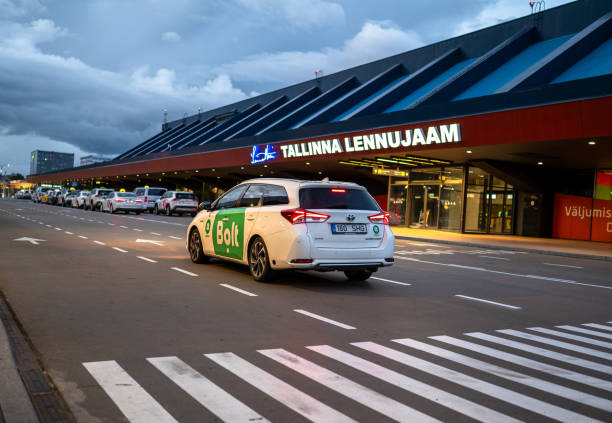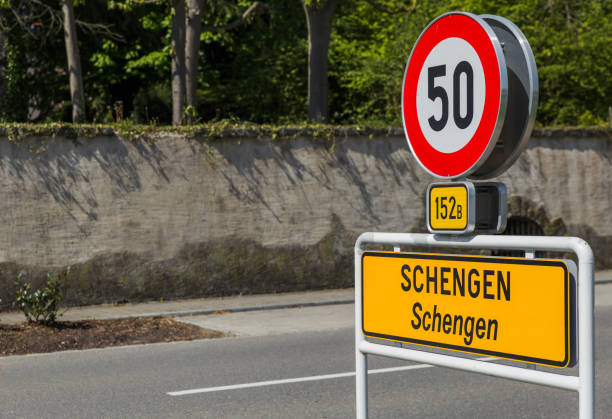Estonia First to Apply EU Entry-Exit System on Oct. 12
Oct 2, 2025
Category: Border and Security EES Estonia News

Estonia will become the first European Union (EU) member state to fully implement the bloc’s new Entry-Exit System (EES), a biometric border control scheme scheduled to begin on October 12, 2025.
The Baltic nation confirmed that all its air, sea, rail, and road crossing points will be equipped to handle the system from the first day of operation.
The EES will replace manual passport stamping for travelers from non-EU countries entering the Schengen Area.
It will require “third-country nationals,” including United Kingdom citizens, to register facial biometrics and fingerprints when crossing into the zone for the first time. Subsequent entries will require only facial recognition.
Estonia leads in readiness
Estonia’s Police and Border Guard Board announced that every one of its control points, from Tallinn Airport to seaports and land crossings with Russia, will begin using the system simultaneously.
A spokesperson confirmed, “All our border control points will start using EES from day one.”
The Independent surveyed 28 Schengen countries and found that most will adopt the digital checks gradually between October 2025 and April 2026.
Germany, for example, will begin with only Düsseldorf Airport, while Luxembourg will also be ready from the start but has just one crossing point—Findel Airport.
Estonia’s swift adoption is partly linked to the presence of eu-LISA, the European Union Agency for the Operational Management of Large-Scale IT Systems, headquartered in Tallinn. The agency is responsible for overseeing the technical rollout of the EES.
What the EES will change
According to the European External Action Service, the EES will be operational across the Schengen Area starting October 12, 2025, with full functionality expected by April 10, 2026.
The system applies to non-EU nationals traveling for short stays of up to 90 days within a 180-day period.
The data collected will include passport details, biometric information (face and fingerprints), and the date and place of entry and exit. EU officials said that this information will speed up border processing while also strengthening security checks.
During the initial months, travelers will face both the new biometric registration and the traditional passport stamping. This means “double red tape” for those at EES-enabled frontiers, as noted by The Independent.
Irish citizens will remain exempt from biometric requirements despite Ireland not being part of the Schengen zone.

Impact on travelers
For visitors, the most immediate change will be the replacement of manual entry and exit stamps with automated records.
Border authorities argued that this will reduce errors in calculating how long a traveler has stayed within the Schengen Area. Overstays will be automatically flagged.
Travelers crossing Estonia’s eastern border at Narva, a key checkpoint facing the Russian town of Ivangorod, will encounter the new procedures.
Estonia’s readiness at both air and land frontiers highlights its role as a frontline EU state on the external border with Russia.
Neil Taylor, author of the Bradt Guide to Estonia, said that the country has a record of moving early on European travel measures.
He recalled Estonia’s abolition of visa requirements for most Europeans in the early 1990s, adding that Tallinn Airport has built a reputation for “speedy but secure border controls.”
Broader EU rollout
The Schengen Area, covering 29 countries with a combined population of about 450 million, eliminated passport checks at internal borders. External frontiers, however, remain tightly managed.
The EES represents the most significant modernization of these external checks in decades.
While Estonia and Luxembourg will start fully on October 12, most member states will use the next six months to expand capacity. Under European Commission rules, countries have 180 days to implement complete checks.
The system is intended not only to streamline border crossings but also to reinforce internal security by making it harder for travelers to overstay visas undetected. Data from the system will feed into EU-wide databases accessible to border authorities.

More border systems soon
The EES is closely connected to another upcoming initiative: the European Travel Information and Authorization System (ETIAS).
Once ETIAS launches, likely in 2026, travelers from visa-exempt countries such as the United Kingdom will need pre-travel authorization in addition to EES registration.
Together, these systems aim to modernize the EU’s approach to managing short-term arrivals.
Officials expect the combined systems to help identify overstays and irregular movements more accurately.
They also argued that digitization will ultimately shorten queues at major airports and land crossings, though the initial months may bring longer waits due to the dual processing of stamps and biometrics.
Challenges in implementation
The staged introduction across different member states means travelers may experience inconsistent procedures depending on their point of entry.
For example, a passenger arriving in Tallinn on October 12 will face full biometric registration, while one landing in Germany the same day may encounter only traditional passport checks at most airports.
Border officials also face the challenge of handling high passenger volumes while adjusting to new systems. Critics warned of potential bottlenecks during peak travel seasons, particularly at airports with limited space for new kiosks and equipment.
Historical context
The push for the EES dates back to efforts within the EU to improve migration monitoring and border security following the 2015 migration crisis. Policymakers argued that manual stamping was outdated and vulnerable to fraud.
The digital system, first proposed over a decade ago, has faced repeated delays due to technical, financial, and logistical hurdles.
Estonia’s role as the first fully compliant country reflects its broader investment in digital governance.
The Baltic nation is widely recognized for early adoption of e-government systems, from electronic voting to digital IDs, which may have helped accelerate its readiness for the EES.

A system shaping Europe’s borders
The Entry-Exit System marks a turning point for travel across the Schengen Area. With Estonia leading the rollout, the EU is moving closer to a uniform, biometric-based border process designed to improve security and efficiency.
For travelers, this means adapting to new checks and procedures, but also benefiting from smoother crossings once the system is fully in place. As other member states catch up, the experience at Europe’s borders will continue to evolve.
What begins in October 2025 is not just a technical upgrade—it is the start of a long-term shift in how Europe manages mobility at its frontiers.
